Generally, a single line-to-ground fault on a transmission line occurs when one conductor drops to the ground or comes in contact with the neutral conductor. Such types of failures may occur in power system due to many reasons like high-speed wind, falling off a tree, lightning, etc.
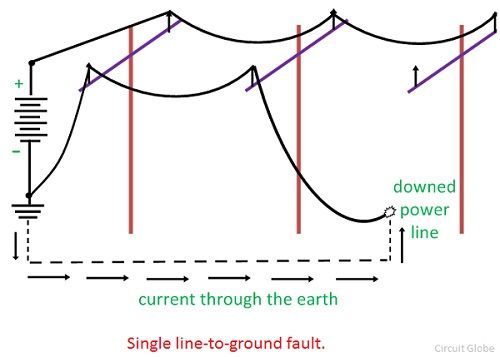 Circuit diagram of single line-to-ground fault
Circuit diagram of single line-to-ground fault
Suppose the phase a is connected to ground at the fault point F as shown in a figure below. Ia, Ib and Ic are the current and Va, Vb and Vc are the voltage across the three phase line a, b and c respectively. The fault impedance of the line is Zf.
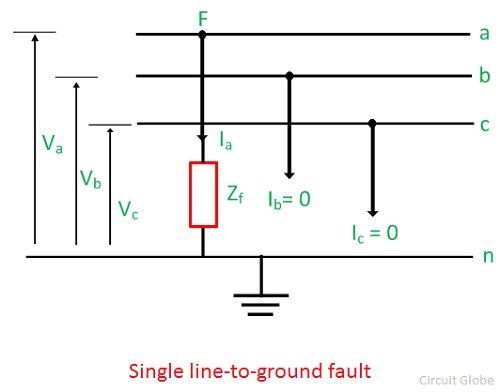 Since only phase a is connected to ground at the fault, phase b and c are open circuited and carries no current; i.e fault current is Ia and Ib = 0, Ic = 0. The voltage at the fault point F is Va = Zf Ia.
Since only phase a is connected to ground at the fault, phase b and c are open circuited and carries no current; i.e fault current is Ia and Ib = 0, Ic = 0. The voltage at the fault point F is Va = Zf Ia.
The symmetrical component of the fault current in phase “a” at the fault point can be written as



 This relation can also be found by matrix method as follows:-
This relation can also be found by matrix method as follows:-
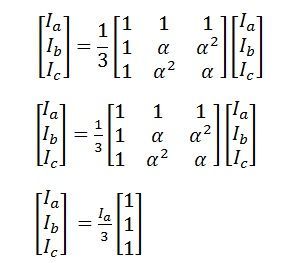
 In the case of a single line-to-ground fault, the sequence currents are equal. The sequence voltage at the fault point is determined by the equations:-
In the case of a single line-to-ground fault, the sequence currents are equal. The sequence voltage at the fault point is determined by the equations:-
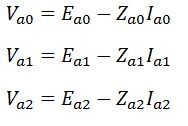 Where, Ea0, Ea1, and Ea2 are the sequence voltages of phase a, and Za0, Za1 and Za2 are the sequence impedances to the flow of currents Ia0, Ia1, and Ia2 respectively. For a balanced system
Where, Ea0, Ea1, and Ea2 are the sequence voltages of phase a, and Za0, Za1 and Za2 are the sequence impedances to the flow of currents Ia0, Ia1, and Ia2 respectively. For a balanced system
 On substituting the Ia0 = Ia1 = Ia2 = Ia in above equation we get,
On substituting the Ia0 = Ia1 = Ia2 = Ia in above equation we get,
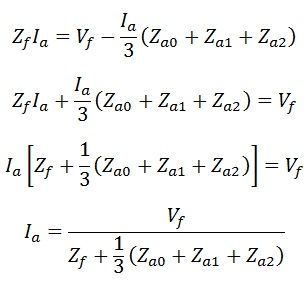 The sequence current is given by equation,
The sequence current is given by equation,

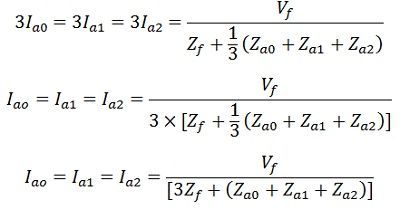
very good side
thank you. very helpful
Great Article
Pls elaborated the 3 phase symmetrical fault .
types
You can study here the types of symmetrical fault http://circuitglobe.com/types-of-faults-in-power-system.html
Waoh its a very good site
its helpful
Very very good site
Thanks for explanation
Really appreciate it!